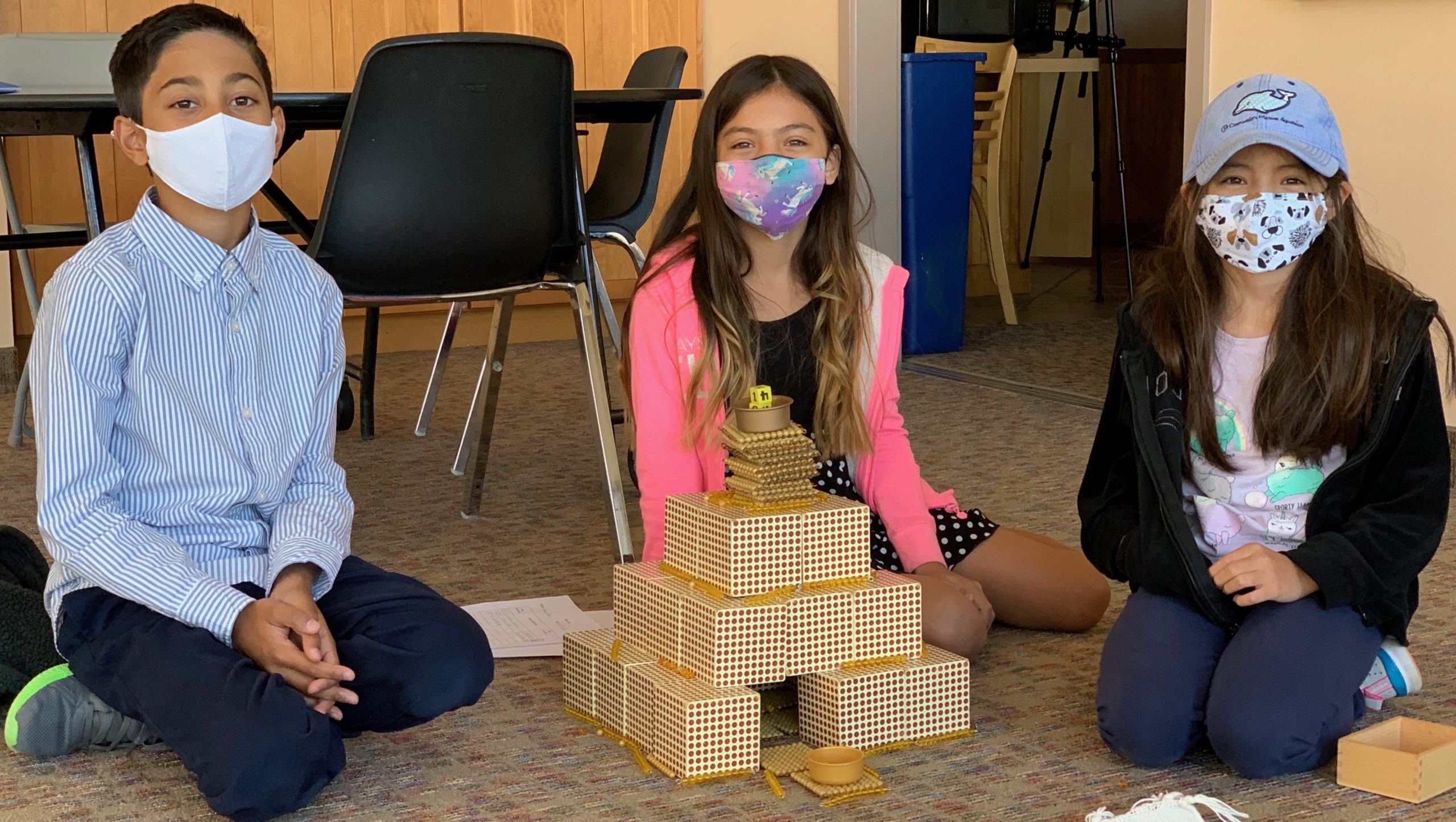The Golden Beads Revisited
The golden beads are an important component of teaching the decimal system in a Montessori classroom. They are a series of golden beads, all the same size, that are used to help students understand unit quantities of tens, hundreds, and thousands. A single bead comprises one unit; ten beads strung on a wire indicates a value of ten. One hundred is indicated by ten bars side by side, which makes a square, and one thousand is ten one hundreds stacked on top of each other, making a cube. You can use these various manifestations of these numbers to introduce the decimal system and, later, practice using it.
.
While Primary, children work with the Golden Beads to understand place value, the same materials are used for a different purpose in Upper Elementary. Here, 5th graders explore divisibility rules using the golden beads and discuss the division of a number without actually carrying out the division.
Exploring Simple Machines
In Physical Science, 4th grade students created paper airplanes to investigate and track their observations prior to studying the benefits of a wedge as a simple machine.

Collaborative Learning
UE students engaged in a Chalk Talk, a silent conversation that helps students organize their thinking and fosters universal participation. The teacher poses a single question on the board and students slowly build on each other’s ideas.

Art and Social Studies Collaboration
The Upper Elementary 5th grade students reviewed and practiced global geography skills while creating pumpkin globes! They engaged in a close study of a globe and then were asked to locate and draw the oceans, continents, prime meridian, and equator to scale. Using natural materials, such as pumpkins, enhanced the sensory experience of the students as they navigated the varying bumps, ridges, and textures of their pumpkins, and they were subsequently reminded of the variations in the physical nature of our world.





